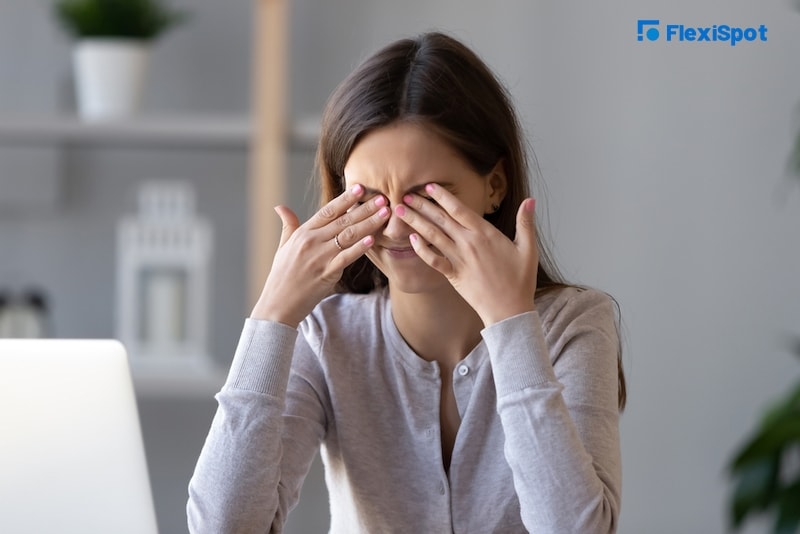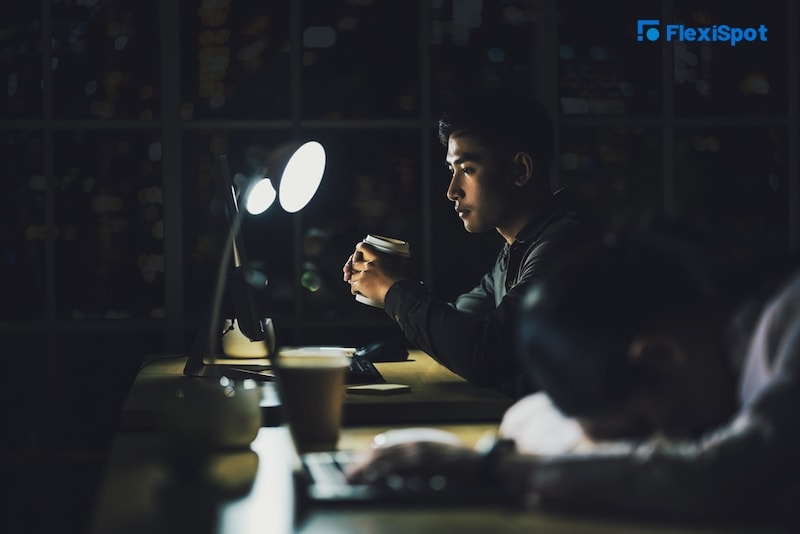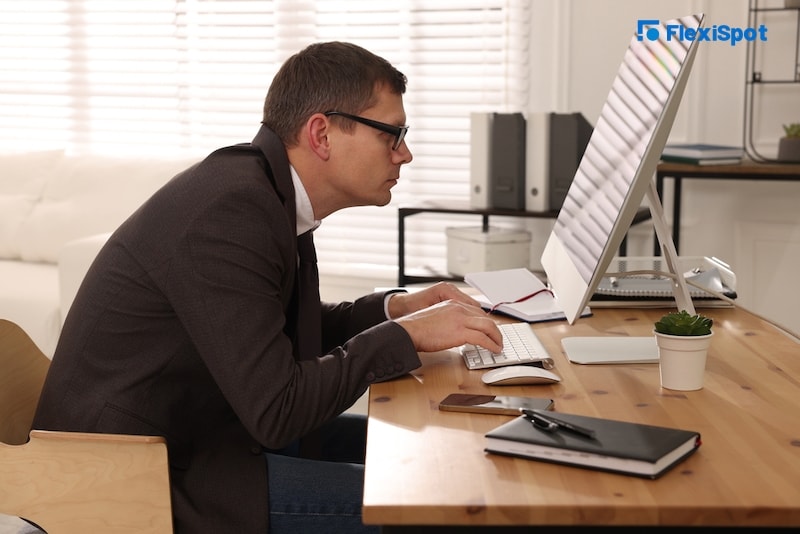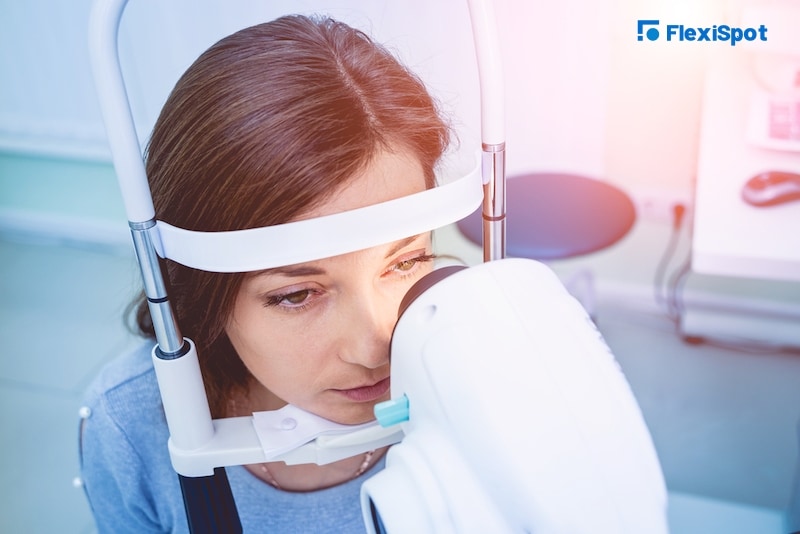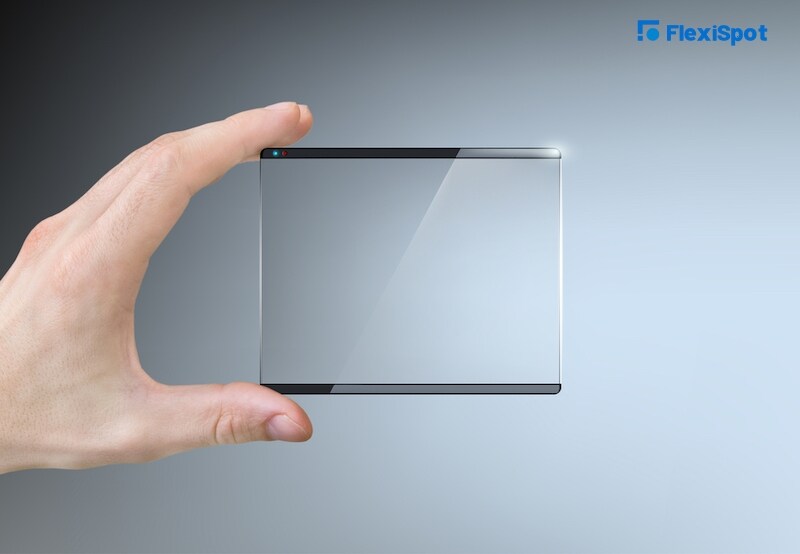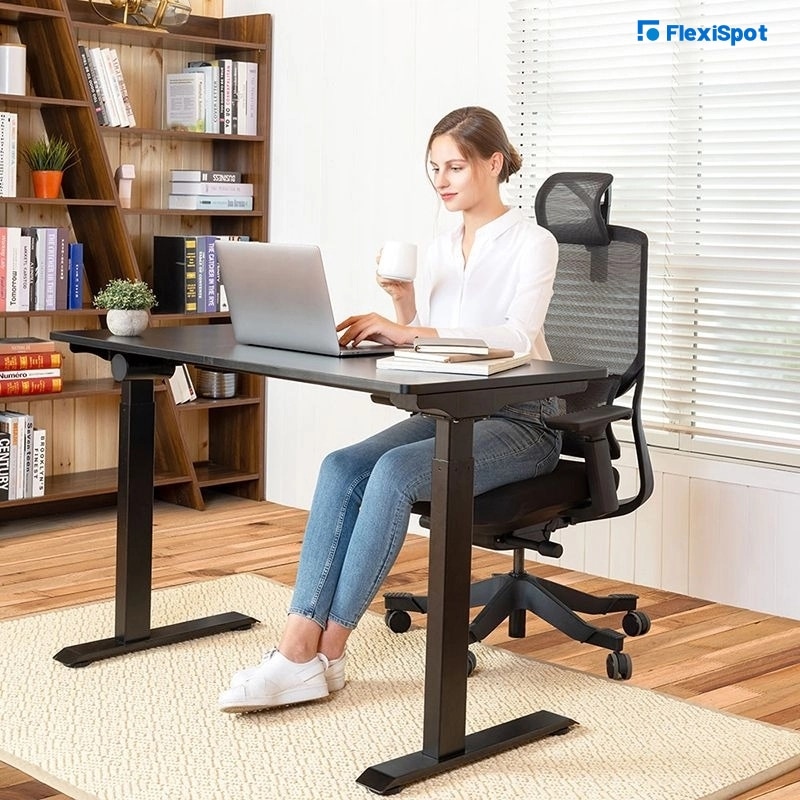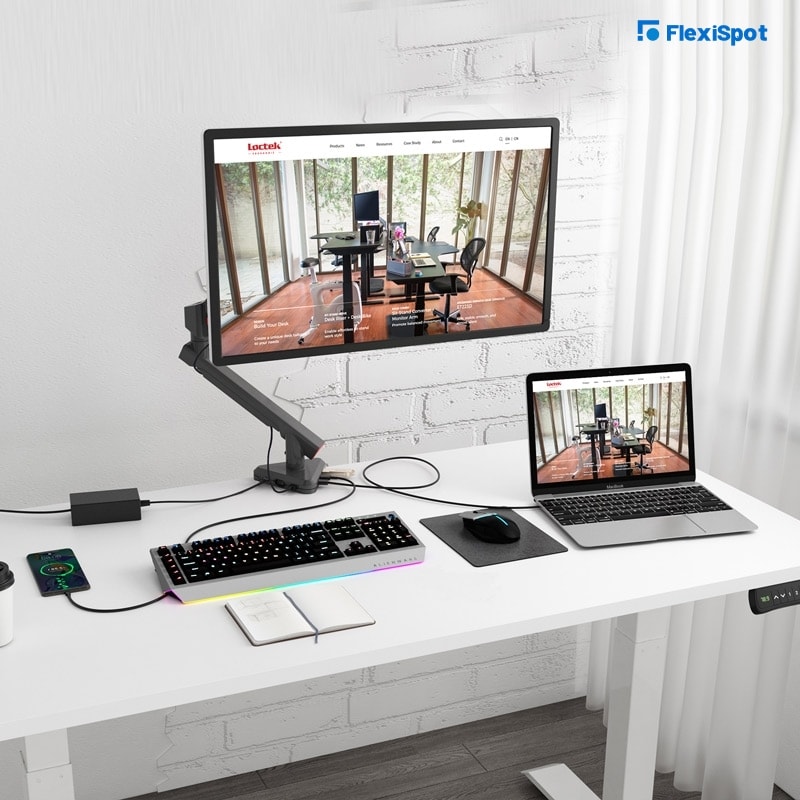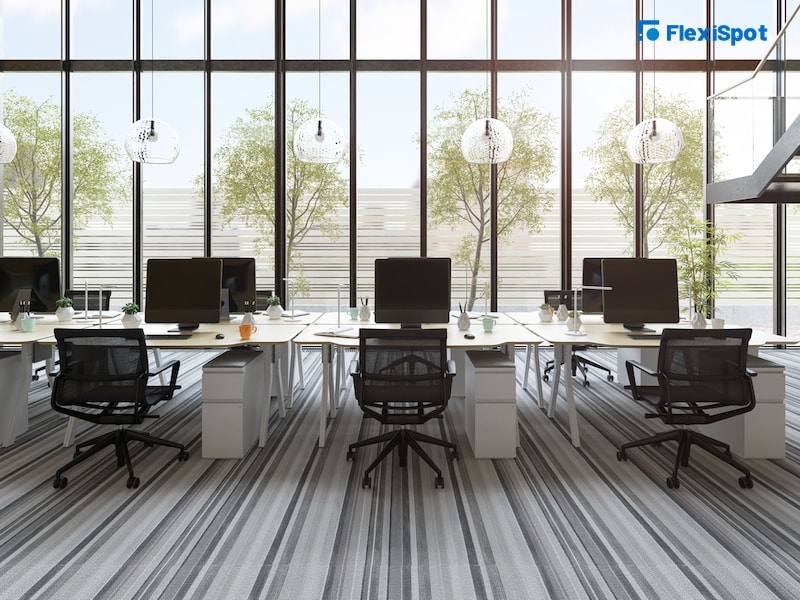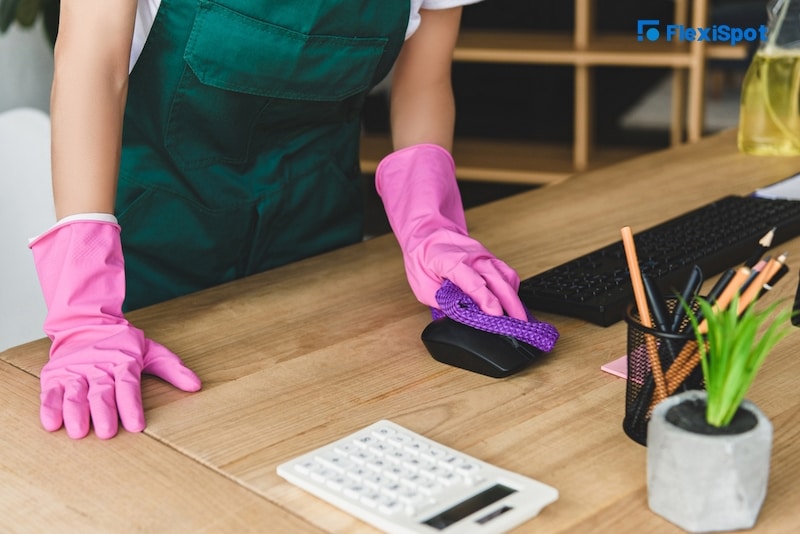Think of any office task. Now think of its execution. One thing is for sure–we rely on our eyesight for a majority (if not all) of the tasks around the office. Having established the importance of good eyesight, it is not surprising that many office workers around the world suffer from an eye strain-a condition where the eyes are tired from intense use, such as reading through files all week. In today’s office environment, several factors contribute to rampant eye strain among workers. We’ll take you through the symptoms, most common causes, and ways to mitigate the condition among employees. Grab a pen and take some notes!
Symptoms of Eye Strain
Eye Strain can be annoying. But most times, it’s not very serious and goes away once you rest your eyes or take steps to reduce the instances of eye discomfort. The good news is that eye strain is easy to treat. But in order to do that, you need to identify the symptoms. This helps rule out the presence of a more serious issue while helping your optometrist come up with the most effective treatment.
Here are some of the most common symptoms of eyestrain:
- Dry Eye
- Eye Irritation
- Blurred Eyes
- Tired Eyes
- Headaches
- Sensitivity to light
- Blood-shot eyes
- Shoulder, neck, and back pain
- Double vision
- Reduced ability to read or focus
- Constantly feeling tired or sleep
If you’re suffering from eye strain in one eye or both, you will experience one or more of these symptoms for prolonged periods. These eye strain symptoms may also just appear when you perform specific visual tasks, which is another sign your problem is, in fact, eye strain.
What Causes Eye Strain?
Does reading printed text present fewer issues compared to reading from a computer? Then you may be suffering from digital eye strain or computer vision syndrome–one of the unintended challenges of working on a computer for hours.
Here are some of the factors that contribute to this strain:
Poor Ambient Lighting
Computer monitors radiate so much light that we can neglect the need for ambient light. Ambient light is the light we get from windows, desk lamps, and other light sources.
Without secondary sources of light, your eyes are forced to focus on one singular point of light, which affects your light, color, and depth perception. Combined, these effects contribute to eye strain.
Glare from Your Computer Screen
Your perception of the visual world starts with your eyes’ retinas. These are regions of the eyes that are rich in light-sensing cells (rods) that can be over-stimulated if exposed to glaring lights. Such exposure results in the massive negative feedback of chemical reactions that can damage the back of your eye.
A different school of thought may argue that computer screens feature blue light, which is milder (safer) than warm light from the sun. Well, prolonged exposure such as that of an office worker’s hours crosses the safe threshold and may lead to the degeneration of your retina.
Poor Posture
Remaining slumped or hunched over a desk disrupts the connection between your brain and spinal cord. This creates a strain in the optical nerve, which affects your light, color, and depth perception. It can also cause hand-eye coordination issues as there's a lag between you seeing something and your brain reacting effectively to said stimulus.
Incorrect Distance from Screen
When your screen is too close, you have to contend with glare. But, you may not view objects clearly on your interface if it’s too far away. It seems like you can win! But, don’t worry. Later in this article, we’ll let you know how you can rise above this issue with the 20/20/20 rule.
Poor Eyesight
Sometimes the problems don't originate from an office worker's tools or environment. Eye strain can also signify that something is amiss with your eyes. That's why organizations need to have eye exams as part of their annual employee medical check-ups.
Age
Our eyes take on a lot of strain from an explosion of light and colors from the very first time we open them. Throughout our lifetime, certain ailments also expose the eyes to infection. Not to mention what continued exposure to irritants like dust, humidity, and lint can do to the eyes. These cumulative effects catch up with us as we grow older and leave us more susceptible to eye strain in our ripe years.
What Does Science Say?
According to the American Optometric Association, dry eye, blurry vision, and sustained headaches are the most common signs of eyestrain. And they can cause nausea, which harms your engagement to tasks and general productivity levels. Such symptoms may present in one eye or both when performing certain visual tasks.
You may also experience one or more of these conditions if you put off seeking treatment for too long. Therefore, it is always prudent to consult an optometrist if your eyes ache (even when your tasks aren't virtual-specific). Sometimes your eye strain may be a sign of an underlying eye issue that needs proper treatment.
Aside from consulting a specialized eye doctor, you can reduce eye strain by minimizing the visual tasks that cause it. Strategically, this might go against your alignment to your company’s bottom line. Fortunately, we have more insight into dealing with the underlying causes of eye strain –Keep reading!
How to Reduce Eye Strain
Minimize Screen Glare
Screen glare results when light bounces off various surfaces. This creates a light polarity that strains the eyes. One of the best ways to minimize screen glare is to fit your screen with an anti-glare screen or film. Painting your walls white or a neutral color costs more but offers a long-term solution.
Increase Text Size
Some Epub and pdf reader apps allow you to switch to black background and white print interface that is less strenuous on the eyes. When that’s not available, you can adjust the text size and contrast based on your task to make it easier to scheme through your work.
Wear Protective Lenses
For years companies like Kodak have been producing non-prescribed anti-glare eyewear. Such glasses have lenses with optimal UV protection and AR (anti-reflective) technology. You can wear such lenses for advanced protection should you notice that your eye strain comes from light exposure.
Maintain Good Posture
Having a good posture at your desk eliminates the strain on your muscles and central nervous system. It calls for keeping your back reasonably straight to ensure there's less stress on the shoulders, neck, and spine.
An ergonomic office chair with 3D lumbar support cradles your back, effectively supporting your weight. This chair comes with added benefits of smooth casters, 4D armrests, and an easy-to-maintain material for a comfortable and convenient working experience.
See an Optometrist
A self-diagnosis only helps address minor symptoms as they arise. For longer-lasting solutions, consider routine eye-checks performed by a qualified optometrist.
During such exams, it's important to accurately inform your doctor on how long you use computers, the distance you maintain from glaring screens, and the persistence of the symptoms.
Ensure that you’re making your appointment with an optometrist and not an optician. An optometrist is an official term for an “eye doctor.” They can prescribe medication, surgery, or corrective lenses. On the other hand, opticians are responsible for fitting eyewear, contact lenses, and other corrective devices.
Apply the 20/20/20 Rule
The 20/20/20 Rule is a micro-break system that was developed by famed American optometrist Dr. Jeffery Anshel. You can implement it by taking a 20-second break every 20 minutes, where you look at least 20 feet away from your workstation.
Such a break reduces the chances of eye strain and also improves your focus on detail-oriented tasks. You can even set reminders on a programmable height-adjustable desk to remind you to take such breaks if you usually get too engrossed in your tasks.
Take Regular Breaks
Avoiding eye stains can be as simple as taking frequent breaks. Most HR professionals even recommend a 10-minute break after an hour of intense work. It’s important to stand and stretch during such breaks. So having a standing desk makes it easier to do so at the comfort of your workstation. Alternatively, you can take a short stroll to the bathroom, water cooler, or a workmate's desk for a little chit-chat.
Monitor Placement
Most people talk about chairs and desks when it comes to maintaining proper postures. However, monitor placements will challenge you even if you have the most ergonomic height-adjustable desk and chair combo.
In that case, you need a monitor arm to help you position your screen for maximum use and effect. If you work with a laptop, it may be advisable to look into a portable laptop stand.
Choose a High-Quality Monitor
In some cases, the combination of eye strain and a poor quality computer monitor can ruin your eyesight for good. This is because old TFT and CRT screens have a lower refresh rate. This causes thousands of image micro-flickers a second that you can't perceive but still harm your eyes.
The simple solution is to replace such screens with modern OLED, AMOLED, or LED computer screens.
How Employers Can Help Reduce Eye Strain
Investing in organization-wide physical and mental wellness initiatives contributes significantly towards reducing eye strain and other afflictions in the office. Your workers are healthier, more productive, and less likely to be absent from work. It also reduces deductions on your organization's co-pay.
Here are a few ways that this shift in corporate culture helps eliminate eye strain:
Employ Good Office Ergonomics
We've touched on how an ergonomically inclined office chair and desk combo can reduce eye strain. However, workplace ergonomics extends beyond workstations. It comes down to lighting, ambiance, wall paint, air quality, and how you space out storage tools and other facilities.
Therefore, good office ergonomics is a long haul investment. So, start with strategic conversations with department heads and their employees. From there, you may need to consult an interior designer and work with only the best ergonomic office furniture manufacturers.
Reduce Dust in the Workplace
Dust is very harmful, especially when it comes into contact with your eyes. In such cases, it dries up your eyes, causing irritation and strain when trying to roll them. Eliminating dust is mostly a janitorial level problem, but there are simple things that everyone around the office can partake in.
For instance, wipe down crumbs when you’re done snacking (if you have to do it at your desk), shake off the dust in your shoes before entering the building, etc. However, you can also reduce its presence by keeping your HVAC system in operational order.
Employ Easy to Use Software
Deploying software with adjustable interfaces can help people avoid excessively small text sizes and brightness and contrast levels that can harm their eyes. Aside from that, you should also think of installing productivity apps such as Pomodoro to help your employees implement the 20/20/20 rule.
Employee Training
Sometimes eye strain can be a symptom of stress or anxiety. In that case, even the best doctors can't help. So, your first line of defense against productivity-reducing aches and pains is encouraging a higher level of competency in your office.
Well-trained workers can always fall back on their training for answers whenever they feel stressed. This results in a more proactive and pragmatic worker instead of one that gets so stressed that it causes eye strain and aches in other parts of the body.
Conclusion
Eye strain doesn’t have to be a pandemic in your office if you can identify and mitigate the problems that cause it. And if the problem is already there, eye exercises, effective office and monitor setups, and clinical advice from medical specialists can help prevent it. Above all, do not neglect to take immediate action in hopes that it goes away. Your eyes are one of your most important resources and need to be guarded. We hope this brief insight helps solve the problem or helps you avoid it altogether.
